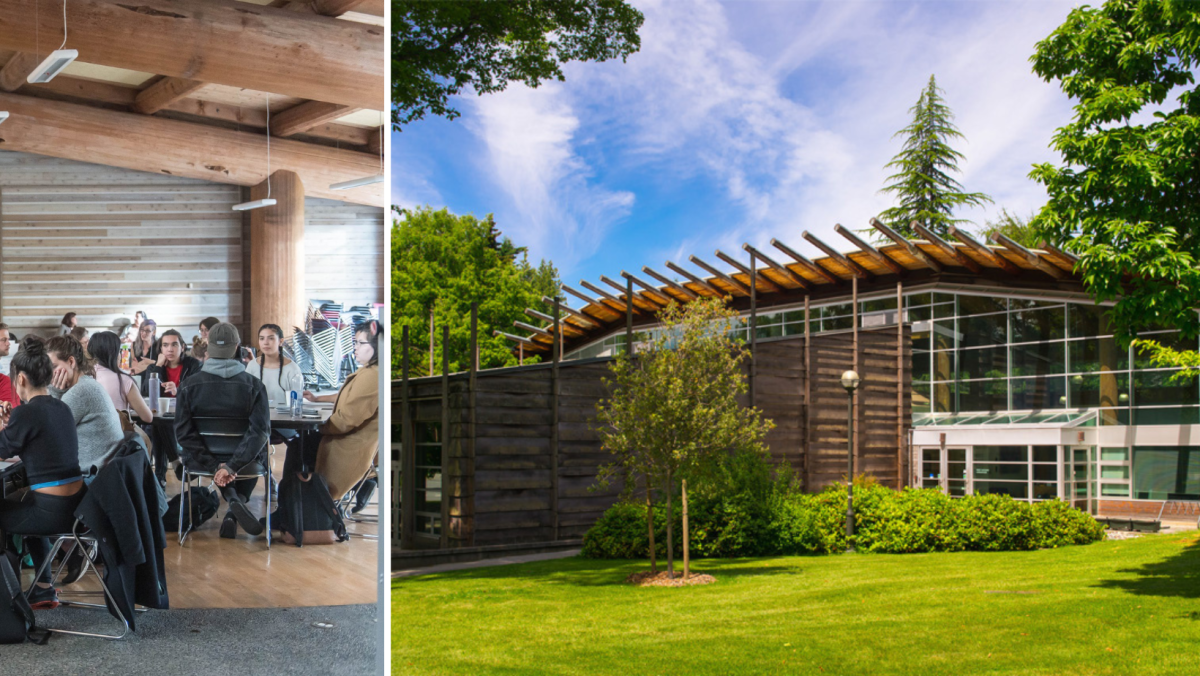Looking for more Indigenous news? Find our stories here.

Back to school can be daunting — new school, new people, new city, new province, new country — especially if it’s different from everything you’ve known.
That’s what it’s like for many Indigenous students arriving on campuses across Canada this week.
“Universities are still built as very colonial institutions,” said Joely Viveiros, associate director of the First Nations House of Learning at UBC.
“So the students out there who are used to community, used to doing things the way they do in their community, used to their elders, used to a certain structure can sometimes struggle here.”
“Sometimes they’re the only Indigenous student in their in their faculty or classes and (need a place to) unwind and relax and talk Indigenous things.”
Toryn Daniels is one of those students. Going into his second year of kinesiology at UBC, Daniels grew up on the Gitanmaax reserve — a community of around 600 people, one hour north of Smithers, B.C. — and never planned on going to university in the city.
“I was more for the small towns because I grew up on the rez and I wasn’t really sure about moving to the city,” he said.
After going to school for a year in Prince George, B.C., Daniels took a year off to spend time with his mother who was battling leukemia. When it came time to go back to school, his sister convinced him to make the move down to Vancouver.
“I remember being a bit overwhelmed when I first moved down by how many people are just everywhere all the time,” he said. “Mannerisms even … it was kinda like a culture shock in a way.”
From the culture shock to the cost of plane tickets, Daniels knew he needed to find a community on campus. That’s where the Longhouse came in.
“I started going to the lunches, I made a couple of Indigenous friends who told me about them and from there it became a weekly thing,” he said.

The Longhouse has been around for 30 years, dubbed a home away from home for Indigenous students, who can thank Verna Kirkness for its creation.
A member of Fisher River Cree Nation in Manitoba, Kirkness led the charge for ensuring students at UBC had access to a safe, culturally sportive community space.
“The Elders were with me every step of the way,” said Kirkness in a release. “That’s how we came to realize we were not to build a Haida house on Musqueam territory. Instead, we talked with the Chief and Council at Musqueam, and they said: ‘We like your idea, but we’d really like you to build it Musqueam style.’”
Still serving as a hub for the campus’ Indigenous population, the Longhouse has weekly lunches, tutoring, programming — from cultural workshops to barbecues — and a student-centred space called the šxʷta:təχʷəm collegium, which is meant to serve as a space just for students.
“There are anywhere from 200 to 400 (Indigenous students), depending on which year, which day, which month, who regularly use the space” said Viveiros.
“We have a lot of urban students — they often just do their thing — and then we have others who are quite tied to the Longhouse. It’s their home away from home.”

The Longhouse wants students to feel safe, comfortable and supported. They’ve employed Indigenous staff to be in those front-facing student services so that when students come in they see someone they’re comfortable with.
“Its having somebody who knows their situation, has experienced some of the same things that they’ve experienced,” said Viveiros.
She believes the Longhouse is a key part of campus and a right for Indigenous students.
“The reason that this is here is because of that inherent right to be comfortable in any space in Canada, that’s what the Longhouse provides for students,” she said.
“No matter where they are, if they’re feeling uncomfortable, they’ve had a bad day, something has been said they can just come here and share.”
While nervous about going back to school, Daniels said he’s also excited for campus to be busy again, getting back into sports and visiting the Longhouse — and he also has some advice for incoming students.
“Explore the communities around your university and find somewhere to be involved,” he said. “I found that really opened me up and helped me a lot throughout the year because of the friendships and bonds I made with people.”





Comments